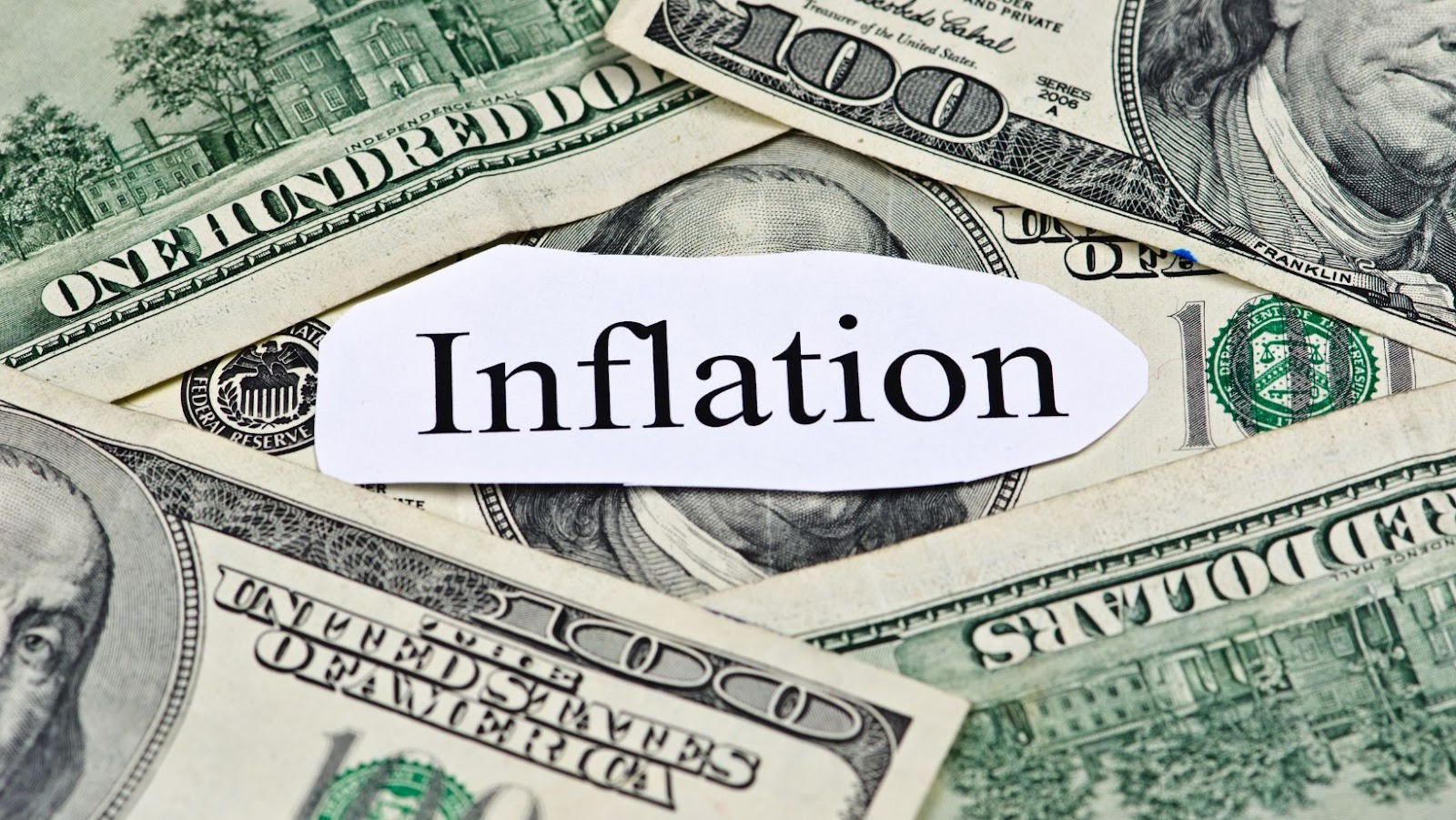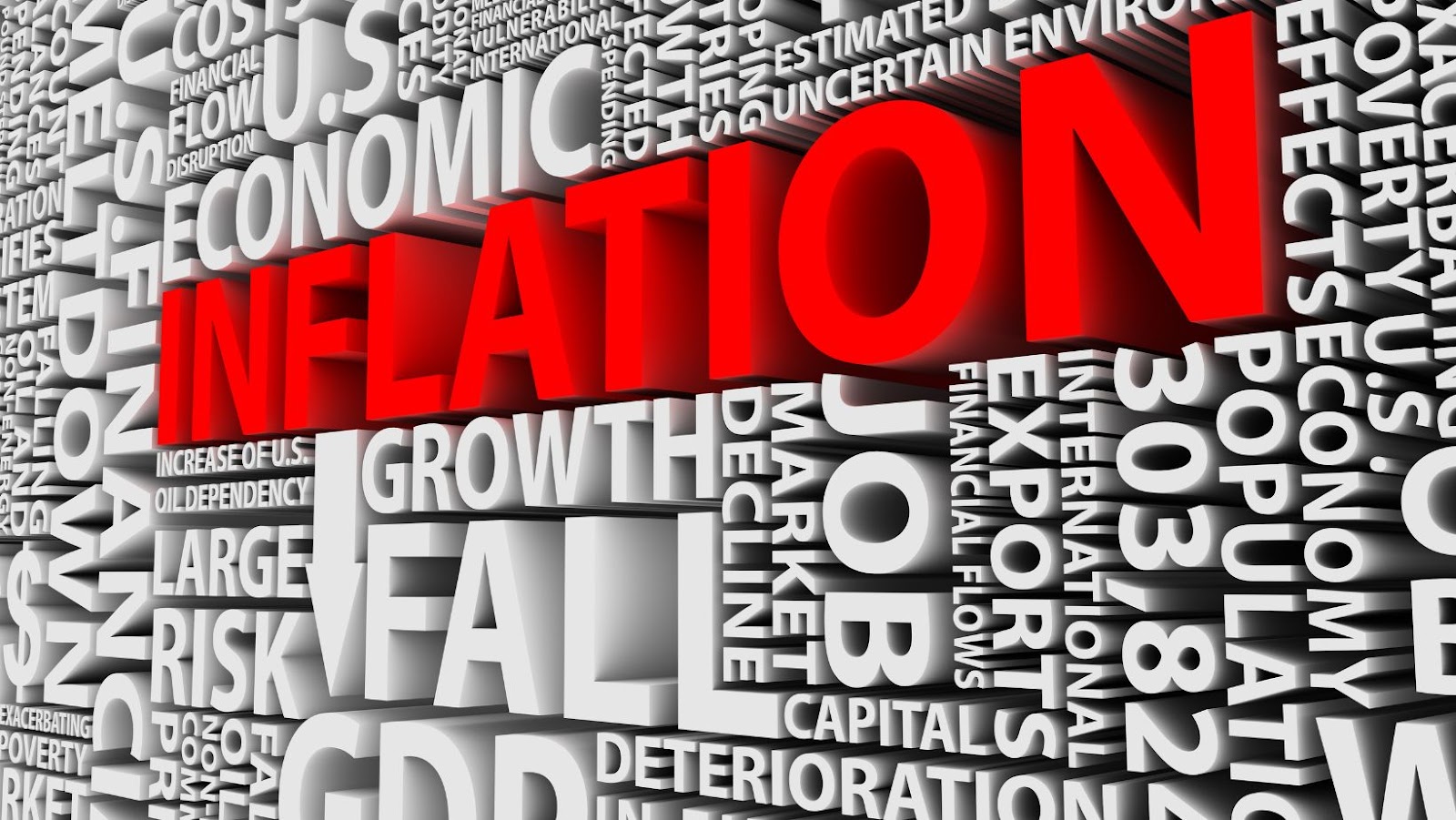
Latin America is increasingly facing the challenge of slowing growth and increasing inflation, further exacerbated by social tensions in some parts of the region. This has led to several economic, political, and social consequences, which will be explored in this article.
We will discuss the current trends in Latin America’s economic performance, their impact on the social and political environment, and the potential solutions to address these challenges.
Latin America Faces Slowing Growth and High Inflation Amid Social Tensions
Latin America is a geographic area encompassing countries in Central and South America, Mexico, and the Caribbean Islands. Geographically, it is an area of diverse terrain, ranging from tropical rainforests to volcanoes, deserts, plains and mountain ranges. Both political and economic systems can vary significantly from country to country but Latin American nations generally share many similar socio-economic qualities such as colonial histories, development challenges, impressive natural resources and large populations.
With 500 million inhabitants making up 8% of the global population, the region represents more than 10% of the world’s economic output. It has traditionally had some of the highest economic growth rates in the world on average over long periods before coming to an abrupt halt- recently due to a combination of reduced global demand for its products and weakening commodity prices. This powerful slowdown has consequently undermined employment and income levels eroding Latin America’s progress toward sustainable development.
Overview of Latin America’s economy
Latin America is home to over 625 million people, representing 8.7% of the planet’s population. From 2017 to 2018, the region’s economies performed well overall with unemployment falling, wages increasing and inflation staying in check. However recent market movements suggest a deceleration in growth momentum. The IMF predicted that Latin America’s real GDP growth would fall from 2.2% in 2018 to 1.6% by 2019 due to weak commodity prices, waning terms of trade and tighter global financial conditions. The breakdown following countries are projected to experience the highest rates of decline: Brazil (1%), Ecuador (0.7%), Colombia (0.4%), Mexico (0%) and Argentina (-0%).
Whereas most Latin American countries are disappointed with their economic slowdown this year compared to 2018 rates, Chile’s output growth is expected to remain relatively strong at 1%. This nation has seen GDP expansion since 2013 due largely to exports–namely copper–along with improved domestic demand related sectors such as construction and services.
Many other nations have also made reforms toward political and economic stability that are now finally bearing fruit–such as Nicaragua, Venezuela, Paraguay and Peru—but they are not immune from external shocks such as changes in commodity prices or weaker international demand for their products or services which can affect their competitive ability on the world stage. As a result these emerging nations need to strengthen their resilience against external market threats so that they are not crippled by future instances of slowing growth rates.
Causes of Slowing Growth
Latin America has experienced slower economic growth over the past few years due to changes in global economic conditions, lack of structural reforms, rampant corruption, and weak rule of law. In addition to these causes, Latin America has faced high inflation and social tensions, further weakening the region’s growth.
This article will discuss these causes of Latin America’s slowing growth and potential solutions.

Decline in Commodity Prices
One key factor behind Latin America’s slowing economic growth can be attributed to a decline in the price of commodities. The region’s economy heavily relies on export of natural resources such as food, materials and energy – the majority of which are commodities. As global demand for these items had decreased in recent years with increasing regulations, sluggish world economic growth and rising competition from other regions, commodity prices have dwindled accordingly.
As a result, many Latin American countries have lost their primary source of income and their economy has stagnated as they struggle to recover revenue without relying solely on exports.
Political Instability
Latin American countries are known for political instability, which has significantly impacted the region’s economic growth. Political unrest, conflict, and uncertainty can lead to decreased investments in the private sector, thereby reducing overall economic output. In addition, poorly designed economic policies can also be a major roadblock to economic growth as they can lead to inefficient resource allocation, or even unfavorable conditions for foreign investors.
The lack of secure property rights in some Latin American countries makes it difficult for businesses to operate with their full potential. In addition, corruption is still widespread in many Latin American countries, creating another obstacle for growth and development in the region. Economic mismanagement can also build up large public debt levels that harm the future sustainability of any country’s economy.
Lack of Structural Reforms
Latin America’s growth has been slowing down in recent years due to multiple factors. One of the major causes of this slowdown is the lack of structural reforms. Structural reforms are policies that can help make the economy more efficient, including reforming the labor market, public services and improving fiscal and financial regulations. Without these reforms, inadequate infrastructure and an uncompetitive business environment can hinder the region’s growth potential.
In many Latin American countries, an antiquated labor code hinders investment in productive activities that would lead to economic growth. In addition, rigid labor laws sometimes make it difficult for businesses to restructure their work force or adopt new technologies as needed. This leads to lower productivity and ultimately slower economic growth.
Countries have also failed to invest enough in infrastructure such as roads, bridges and ports necessary for economic development and increased productivity levels in many sectors of the economy such as agriculture and manufacturing. On top of this, bureaucratic inertia has led to a lack of proper regulations which allow businesses to freely operate in a competitive environment. Finally, fiscal policy has sometimes been too conservative due to its excessive focus on short-term budget balances instead of investing more on long-term projects that could eventually lead to greater GDP growth performance in Latin America over time.
Impacts of Slowing Growth
Latin America is a region that faces many economic and social challenges, including slowing economic growth and high inflation. This has caused a decrease in global demand for Latin American exports, which has decreased economic output. Additionally, the region is plagued with social tensions due to inequality, which has caused further economic stagnation.
This article will explore the impacts of Latin America’s slowing growth on the region’s people, businesses, and economy.
High Inflation
A major consequence of Latin America’s slowing growth is an increase in high inflation. Inflation is the rate at which the prices of goods and services rise over time. High inflation is typically detrimental to economic growth because it reduces business investment and consumer buying power, creating a ripple effect.
The main cause of high inflation in Latin America is a lack of aggregate demand, which is the total demand for all economic products and services. When aggregate demand decreases, so do companies’ profits, which results in businesses cutting back production or laying off workers due to decreased sales. This then leads to higher spending deficiencies and eventually causes prices to exponentially increase. This market imbalance can also be caused by governments’ monetary policies such as when central banks print too much money; that results in more money chasing after fewer goods and services, causing prices to skyrocket even further.
In Latin America, high inflation has caused considerable economic hardship, eroding purchasing power and amplified income inequality. Companies are hesitant to invest or open new positions because the rising cost of doing business erodes their profit margins; those who lose their jobs have trouble finding new ones due to limited resources. The individuals who can afford necessities often cannot save or plan for their futures as they cannot predict how quickly prices will escalate tomorrow or next week.
To bring control back over inflation levels in Latin America, governments must manage their economies better by decreasing taxes on businesses while increasing oversight on national-level policies like taxation rates and trade rules — both free-market regulation on pricing decisions as well as financial monitoring should help restore stability across the region by putting some control back into the purchasing power equation for businesses and consumers alike.

Decreased Foreign Investment
Increasingly, Latin American countries have seen slower growth in the several years, which has led to significant economic and political challenges in the region. One of the most profound impacts of this slowing growth is the decrease in foreign investment.
Such reduced investment is due to several factors, including weakened economic conditions and decreasing commodity prices such as oil and metals. This has increased the challenge for Latin American countries to finance infrastructure projects or support public programs such as education and healthcare.
Investment from Europe, China, Japan, and other parts of Asia have declined significantly due to economic challenges, further weakening investment and FDI flows into Latin America. Investors are now more likely to favor more established economies with higher levels of capital creditworthiness. This decreased foreign money coming into Latin America will further strain governments’ ability to modernize their countries’ infrastructure and provide vital services for their citizens.
Rising Unemployment
The slowing of Latin America’s economic growth has resulted in rising unemployment rates throughout the region. Unemployment rates were already high before the onset of the global financial crisis, but have risen even higher as businesses struggle to cope with decreases in demand and revenue. In Mexico, unemployment has increased from 5% to nearly 7%, while in Brazil it more than doubled, from 6.1% in 2008 to 13.5% in 2016.
The increase in unemployment has created a dire situation for those without a job: they often lack access to essentials such as food, water and housing. Furthermore, they cannot contribute financially to their families or communities without an income. This further deepens the cycle of poverty common in some parts of Latin America and creates greater social inequality throughout the region.
In addition to these direct effects of rising unemployment, governments face long-term challenges due to lower tax income from individuals and businesses affected by slow growth. This can limit their ability to invest in vital public services such as education or healthcare, which can hinder economic prospects for many people in Latin America now and into the future if policymakers do not address them appropriately.
Social Tensions
Latin America has been facing slowing economic growth in recent years due to several factors, such as the fall in oil prices and capital outflows. In addition, the Latin American countries have also been hit by rising inflation, which, coupled with the slowing economic growth, has created social tensions in the region.
This article will analyze the social tensions in Latin America and how these tensions have been fueled due to the economic downturn.
Rising Poverty Rates
The slowing growth in Latin America has profoundly impacted the region’s economic and social stability. As a result, many countries face increasing poverty rates, with some of the most affected countries being Venezuela, Brazil, Colombia and Mexico. This is largely due to falling wages, high unemployment levels and rising living costs in the region.
The decline of economic opportunities has put additional pressure on low-income communities struggling to make ends meet. With limited access to adequate healthcare, nutrition and education programs, families face an uphill battle to survive. Furthermore, pre-existing social tensions have been exacerbated by rising poverty rates across Latin America as inequality becomes more visible.
This situation potentially creates further divisions between different socio-economic classes in Latin America as those who can afford necessities become increasingly alienated from those who cannot. With most governments unable to assist those living below the poverty line, these social issues are only likely to continue unless there is an improvement in the economic situation across the region.
Increasing Crime Rates
In many cases, Latin America’s slowing growth has been coupled with increasing crime rates and political instability. As economic inequalities in the region become more pronounced, tensions between social classes have grown and increased criminal activity, including kidnappings and other forms of violence.
Additionally, protests and demonstrations stemming from demands for improved living conditions have become commonplace in some areas as people seek to express frustrations. The fragmentation of some governments has also put pressure on local authorities as authorities often lack adequate resources to maintain peace and prevent crime. These concerns have further highlighted challenges related to rising levels of insecurity across Latin America.

Growing Inequality
The slowing economic growth in Latin America has been accompanied by increasing inequality and severe poverty. Although the region has done a good job at reducing overall poverty levels, most people have seen decreased incomes. The latest Inter-American Development Bank report that only 13 percent of Latin Americans saw an increase in their incomes during 2009-2017, while 42 percent of the population experienced a moderate to large decrease—a situation putting social tensions in many countries under pressure.
The direct effects of inequality and poverty on people’s lives are stark. For example, half of Latin Americans do not get enough to eat due to economic hardship, 15 million lack secure employment and more than 1 in 5 children are forced into child labor just to contribute financially to their households. This situation is further exacerbated by a lack of opportunities for vulnerable populations such as rural communities and indigenous peoples to access the support they need. High unemployment rates, reduced government services and an absence of youth-focused initiatives suggest that many generations will be locked out from basic opportunities, leading to even greater social divisions across the continent.
Solutions
Various solutions have been proposed to address Latin America’s slowing economic growth and rampant inflation. These solutions range from fiscal and monetary policies to structural reforms, aiming to achieve more balanced, stable and sustainable economic growth in the region.
This article will explore some of the potential solutions and discuss their effectiveness in addressing the region’s current and long-term problems.
Fiscal and Monetary Policies
Fiscal and monetary policies provide two primary tools for governments to manage their economies. Governments use fiscal policy to manipulate government spending, taxation and borrowing to affect economic output. On the other hand, monetary policy manages the money supply and manipulates interest rates to achieve desired levels of economic activity.
In Latin America, fiscal policies have often been driven by short-term objectives such as reducing inequality or alleviating poverty — not necessarily with stabilizing macroeconomic objectives in mind. These policies are often inconsistent with prudent economic management, leading to a rapid build-up of public debt and budget deficits which in turn restrict the capacity of governments to effectively respond to recessions and crises. In addition, high commodity prices resulted in misallocating government resources and weak institutional settings. This meant that gains from record high export revenues were poorly monitored and controlled while debt levels rose rapidly.
Monetary policy has generally fared better in Latin America. Central banks are typically autonomous, allowing them greater flexibility to respond swiftly when required by setting appropriate interest rates or using other instruments such as quantitative easing (QE). However, without tightly implemented fiscal policies or credible reforms it is difficult for monetary policy alone to effectively reduce large twin deficits or current account imbalances — something countries in this region are highly vulnerable too due to their heavy reliance on commodities exports for wealth creation.
For Latin American economies to remain resilient over time, a combination of well designed fiscal policies that support macroeconomic stability and sustained commitment from central banks towards price stability will be required. This will ultimately create a strong foundation for sustainable growth leading to 2030 aspirations set out by UNAIDS goals for the region’s economic development.
Structural Reforms
Latin American countries must undertake structural reform measures to counter slowing economic growth. For instance, regulatory reforms must be implemented to reduce state interventions, create level playing fields, and increase competitiveness. This can help open access to finance and investment, which leads to increased private sector activity and job creation.
Other examples of reforms that can help boost Latin America’s economic development include:
- Improving infrastructure and logistics networks.
- Increasing access to the latest technologies.
- Advancing educational attainment levels.
In addition to stimulating economic growth and job creation in Latin America through reforms, it is also necessary for countries in the region to reduce inequality, address poverty, and improve overall social welfare. This can be accomplished by increasing social protection measures for vulnerable populations, providing greater access to quality education opportunities for all age groups – especially youths – emphasizing gender equality in the workplace and strengthening public health systems. Through these public policies Latin America can mitigate some of the impacts from its slowing economic growth while creating a more secure future for its citizens.
Improved Governance and Institutions
The impact of Latin America’s slowing economic growth is largely attributed to its weak economic institutions, underdeveloped financial markets, and poor governance. To mitigate the impacts of low economic growth in the region countries must focus on improving their institutional framework and governance, ensuring access to better education, improving macroeconomic policies and creating new opportunities for public-private partnerships.
First and foremost, steps must be taken to improve the quality of Latin American countries’ institutional framework. This can include initiatives like tackling corruption through stringent anti-corruption policies and strengthening regulatory practices to ensure compliance with international standards such as Transparency International’s Anti-Corruption Standard or the International Monetary Fund Executive Board’s code of Good Practices on Transparency in Monetary and Financial Policies. Additionally, structural reforms can be undertaken to encourage investment into infrastructure sectors that play a key role in achieving higher rates of sustainable growth like communication, transportation or energy technologies.
Second, enhancing access to quality education can help create an environment where businesses and entrepreneurs are better equipped to enter the global marketplace by providing individuals with knowledge needed for modern industry jobs. This ultimately boosts labor force participation rates, increasing incomes and economic growth across the board. Governments could implement tailored programs addressing deficiencies such as gaps between educational systems in rural areas versus more urban centers while providing access to first language teaching for indigenous populations.
Thirdly greater collaboration between public sector entities and private businesses is necessary for building holistic policies that promote investment freedom thereby creating an environment conducive for innovation and business activity across sectors leading not only a ramp up in overall GPD but also advancements in key segments like renewable energy sources or energy efficiency projects which are increasingly gaining importance amidst rising climate concerns.


